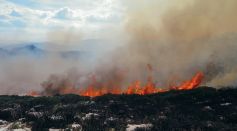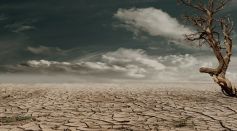Tags: Climate change

Polar Bears Could Be Extinct by 2100, Climate Change to Blame

Fossil Fuels and Cows Are Contributing to More Methane Emissions Than Previously Thought

3 Plants to Grow That Could Withstand Climate Change in Your Backyard

‘Impossible' Arctic Wildfires Emerged Due to Global Warming

Burger King Going Green: Fighting Climate Change and Methane Emissions By Feeding Their Cows With Lemongrass

Researchers Offer Solutions to Tackle Climate Change, Land Degradation and Food Security
Tiny Polynesian Islands May Not Be Threatened by Climate Change After All: New Study Gives Better Perspective
Russia's Oil Spill Blamed on Melting Permafrost; Clean-up Could Take 10 Years
Scientists' Unique Study Identifies Earth's Cleanest Pocket of Air
Only 10% of Canada's Endemic Species are 'Globally Secure' With the Rest Slowly Disappearing
The Next Great Migration: Immigration Is the Solution to Climate Change
1.2 Million Inhabitants Might be Affected by Marshlands Rapidly Sinking in Louisiana Within 50 Years
US Twice Likely to Experience More Devastating ‘Dust Bowl’ than During the Great Depression Once Every 20 Years: Study
Catastrophic Tsunami Could Happen in Alaska Anytime Soon as Only a Third of a Glacier in Prince William Sound is Left
Mosquitos Carrying Dengue, Zika, Yellow Fever Would Be More Prevalent by 2030, Study Warns
Morbid Effects of Climate Change Shows Wolf Spiders Resort to Cannibalism
Melting Snow Caps in the Himalayas Cause Toxic Glowing Green Algae to Bloom Big Enough to be Seen From Space
Storms in US Eastern Seaboard and Asia Could Slow Down by 2 Miles Per Hour Due to Climate Change
Sharks, Whales, Polar Bears, and Other Large Marine Animals At-Risk of Extinction by 2120 Due to Climate Change,Scientists Say

Megadrought is Coming: How Climate Change Will Give North America the Worst Drought in Centuries
Most Popular

Microplastics Are Everywhere — How Plastic Pollution Threatens Wildlife, Soil, and Water

Brain Health Aging Guide: Effective Strategies for Cognitive Decline Prevention and Lower Dementia Risk

Mitochondrial Health and Aging: How Cell Energy Drives Modern Anti-Aging Science

How Scientists Use Radio Telescopes to Search for Alien Signals Across the Universe




